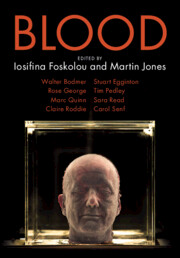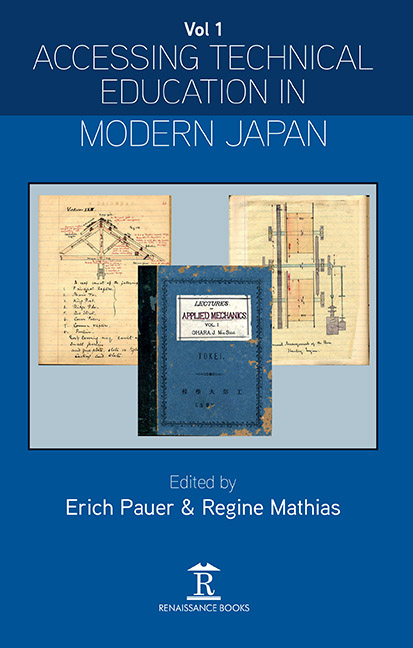Refine search
Actions for selected content:
3430 results in Popular science
6 - Optics, Astronomy, and Natural Philosophy: Beeckman, Descartes, Kepler, and the Dutch Connection
-
-
- Book:
- Knowledge and Culture in the Early Dutch Republic
- Published by:
- Amsterdam University Press
- Published online:
- 07 October 2022
- Print publication:
- 24 June 2022, pp 129-156
-
- Chapter
- Export citation
4 - Framing Beeckman: Cornelis de Waard as Editor of the Beeckman Papers
-
-
- Book:
- Knowledge and Culture in the Early Dutch Republic
- Published by:
- Amsterdam University Press
- Published online:
- 07 October 2022
- Print publication:
- 24 June 2022, pp 63-80
-
- Chapter
- Export citation
11 - Networks of Knowledge in Middelburg around 1600: The Context of Isaac Beeckman as a Young Man
-
-
- Book:
- Knowledge and Culture in the Early Dutch Republic
- Published by:
- Amsterdam University Press
- Published online:
- 07 October 2022
- Print publication:
- 24 June 2022, pp 261-316
-
- Chapter
- Export citation
15 - ‘Communicated Only to Good Friends and Philosophers’: Isaac Beeckman, Cornelis Drebbel, and the Circulation of Artisanal Philosophy
-
-
- Book:
- Knowledge and Culture in the Early Dutch Republic
- Published by:
- Amsterdam University Press
- Published online:
- 07 October 2022
- Print publication:
- 24 June 2022, pp 393-414
-
- Chapter
- Export citation
17 - ‘Ut patet in figura’: On the Use of Images in Beeckman’s Journal
-
-
- Book:
- Knowledge and Culture in the Early Dutch Republic
- Published by:
- Amsterdam University Press
- Published online:
- 07 October 2022
- Print publication:
- 24 June 2022, pp 451-470
-
- Chapter
- Export citation
12 - Musical Culture in Middelburg in the Times of Isaac Beeckman
-
-
- Book:
- Knowledge and Culture in the Early Dutch Republic
- Published by:
- Amsterdam University Press
- Published online:
- 07 October 2022
- Print publication:
- 24 June 2022, pp 317-338
-
- Chapter
- Export citation
1 - Introduction
-
-
- Book:
- Knowledge and Culture in the Early Dutch Republic
- Published by:
- Amsterdam University Press
- Published online:
- 07 October 2022
- Print publication:
- 24 June 2022, pp 15-28
-
- Chapter
- Export citation

Blood
-
- Published online:
- 13 June 2022
- Print publication:
- 07 July 2022

Accessing Technical Education in Modern Japan
-
- Published by:
- Amsterdam University Press
- Published online:
- 26 May 2022
- Print publication:
- 01 March 2022
-
- Book
- Export citation
Miscellaneous Frontmatter
-
- Book:
- Accessing Technical Education in Modern Japan
- Published by:
- Amsterdam University Press
- Published online:
- 26 May 2022
- Print publication:
- 01 March 2022, pp i-iv
-
- Chapter
- Export citation
11 - The Establishment and Curriculum of the Tōkyō Shokkō-gakkō (Tōkyō Vocational School) in Meiji Japan
-
-
- Book:
- Accessing Technical Education in Modern Japan
- Published by:
- Amsterdam University Press
- Published online:
- 26 May 2022
- Print publication:
- 01 March 2022, pp 279-302
-
- Chapter
- Export citation
1 - The Translation of Technical Manuals from Western Languages in Nineteenth-century Japan: A Visual Tour
-
-
- Book:
- Accessing Technical Education in Modern Japan
- Published by:
- Amsterdam University Press
- Published online:
- 26 May 2022
- Print publication:
- 01 March 2022, pp 1-18
-
- Chapter
- Export citation
12 - The Development of Mining Schools in Japan
-
-
- Book:
- Accessing Technical Education in Modern Japan
- Published by:
- Amsterdam University Press
- Published online:
- 26 May 2022
- Print publication:
- 01 March 2022, pp 303-346
-
- Chapter
- Export citation
2 - The Translation of Western Books on Natural Science and Technology in China and Japan: Early Conceptions of Electricity 19
-
-
- Book:
- Accessing Technical Education in Modern Japan
- Published by:
- Amsterdam University Press
- Published online:
- 26 May 2022
- Print publication:
- 01 March 2022, pp 19-36
-
- Chapter
- Export citation
8 - Kikuchi Kyōzō and the Implementation of Cottonspinning Technology: The Career of a Graduate of the Imperial College of Engineering
-
-
- Book:
- Accessing Technical Education in Modern Japan
- Published by:
- Amsterdam University Press
- Published online:
- 26 May 2022
- Print publication:
- 01 March 2022, pp 189-216
-
- Chapter
- Export citation
Miscellaneous Frontmatter
-
- Book:
- Accessing Technical Education in Modern Japan
- Published by:
- Amsterdam University Press
- Published online:
- 26 May 2022
- Print publication:
- 01 March 2022, pp v-viii
-
- Chapter
- Export citation
Contents
-
- Book:
- Accessing Technical Education in Modern Japan
- Published by:
- Amsterdam University Press
- Published online:
- 26 May 2022
- Print publication:
- 01 March 2022, pp v-vi
-
- Chapter
- Export citation
6 - From Student of Confucianism to Hands-on Engineer: The Case of Ōhara Junnosuke, Mining Engineer 114
-
-
- Book:
- Accessing Technical Education in Modern Japan
- Published by:
- Amsterdam University Press
- Published online:
- 26 May 2022
- Print publication:
- 01 March 2022, pp 114-160
-
- Chapter
- Export citation
Index
-
- Book:
- Accessing Technical Education in Modern Japan
- Published by:
- Amsterdam University Press
- Published online:
- 26 May 2022
- Print publication:
- 01 March 2022, pp 445-459
-
- Chapter
- Export citation
Frontmatter
-
- Book:
- Accessing Technical Education in Modern Japan
- Published by:
- Amsterdam University Press
- Published online:
- 26 May 2022
- Print publication:
- 01 March 2022, pp i-iv
-
- Chapter
- Export citation
